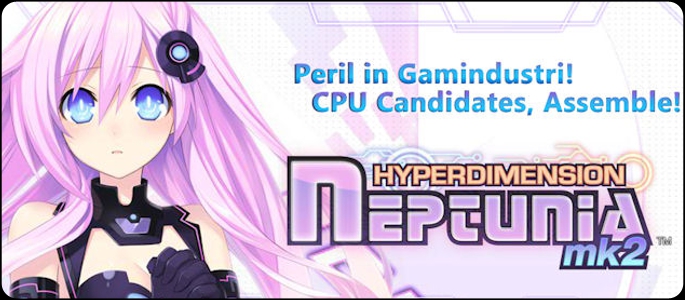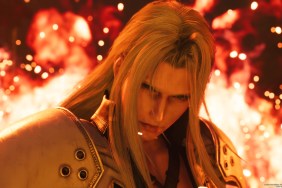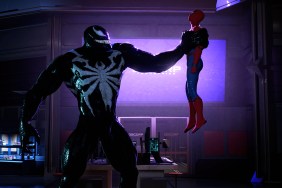The announcement of Hyperdimension Neptunia MK2, a sequel to the extremely underwhelming original, brought about a lot of mixed emotions in RPG lovers everywhere. On one hand many, including myself, were less than enthusiastic about the sequel after being disappointed with the first. However, on the other hand, there is nowhere to go but up. Right? Thankfully I can say with confidence that MK2 takes some huge strides forward and improves on a lot of what people gripped about on the original.
Hyperdimension Neptunia MK2 takes place in the land of Gamesindustri, a world-sized parody on the Japanese gaming industry and the console wars. Players take control of Nepgear, Neptune’s little sister, as she and many of her friends from the original game try to free the world from the grasp of ASIC, who are attempting to take over Gamesindustri. The game starts off with Neptune and the other CPUs from the original game being captured and now three years later, Nepgear and friends must try to fix everything.
The great thing about the game is the huge collaboration between big RPG developers and characters in the game are representative of the companies. IF and Compa, who start out with your party, represent developers Idea Factory and Compile Heart. Add in the character Gust, based off the company of the same name and Nisa, who represents NIS America, the publishers of the game. The towns that you visit in the game are also based on things from the game industry, like Lastation (PlayStation) and Leanbox (Xbox). These lands and their CPU counterparts are made up to fit the console and company they represent.
The biggest issue people had with the original was the gameplay, which took a simple thing like healing and made it ridiculously frustrating and, to put it nicely, stupid. Hyperdimension Neptunia MK2 does away with the horrible percentages and really streamline gameplay. The game does a great job of giving players the same customization options from the first but makes the combat a lot easier to dive into an enjoy.
The combat system is turn-based and is a strong point to the game. Each turn, players will be able to move a character a set distance based on their MOV stat. Once you get close enough to an enemy, a number of attack options come available on the face buttons. Each button has a different attack mapped to it, and through different varying combinations of buttons, you can pull off more powerful combo attacks. The different attacks come in the form of quick dash attacks, powerful attacks, and your basic strike. Each attack cost a set number of AP or Attack Points, so players will want to pay attention to this as they pick and choose which attack to perform. As you continue to damage an enemy in battle, his guard points will diminish and when at zero, attacks will do more damage.
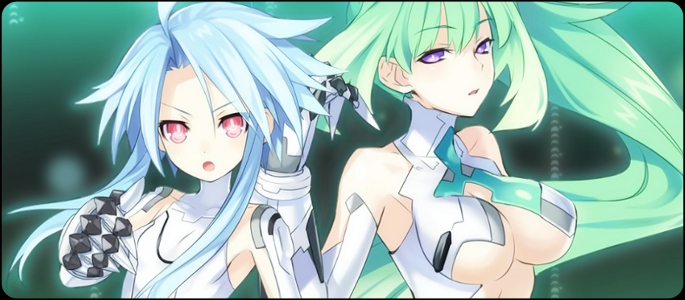
In the battle you will also be responsible for SP or Special Points. This gauge of points will increase during battle when dealing or taking damage and at the end of your characters turn. These points are used to cast skills such as healing your teammates, curing status effects, and some powerful attack techniques. The abilities in here that do damage can take a lot of SP to use but are extremely helpful in boss battles.The great part here is that each characters’ special skills are different from the rest, giving each character a very unique feel and use on the battlefield.
Your party starts out as three members but quickly grows past that to get up to eight. Once you get to a point where you have more than four characters in your party, you can partner two people together, setting one in a support role. This person in the support role is not able to fight in battle, but they do provide passive abilities to their partnered character. These abilities are unique per character and range from increased damage to + magic defense. This big party and the ability to set up support characters is very nice, especially considering that the game has 13 playable characters.
The combat works very well and is very easy to pick up, but it is also just plain easy. Nothing here will take you that many attempts to clear, instead pushing you quickly to the story which can be good and bad. The positives here are that the overly lengthy dungeons are gone, replaced by quick hitting dungeons that briskly move you through the game. This allows players to pick up the game and complete a few quests in a short amount of time, allowing for quick gaming sessions. Enemies appear on-screen and give players the option to run past them or try to get in a preemptive strike and take to the offense first. If an enemy is too weak though, the preemptive strike will destroy them off the bat, taking out a lot of unneeded combat. The dungeons you will find yourself in do a better job than the first of providing some variety but there are still a few repetitions of palettes.
The big problem to be found is that the combat is built to push players towards the story with extreme force, but the story just isn’t good at all. A lot of the humor that made the first game shine has been forgotten, leaving players with a story that does not do much to get you interested and characters that somehow didn’t improve from the previous game. In fact, the best thing about the story is the fact that you can press a single button to quickly progress through loads of completely useless dialogue and get back to the combat and everything else that this game has to offer. For players like myself, who have played the original, the story somehow takes a step back.
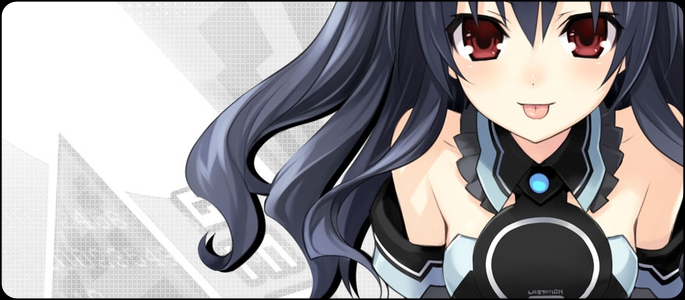
Thankfully, there are other things to do outside of the story and combat which add some nice depth to the game. Players have a ton of cool customization options on players, especially when it comes to outfits and weapons, although a few too many of the weapons are recycled from the previous game. Players will be able to gather ingredients and plans throughout the dungeons to synthesize new items and weapons, as well as take quests from the town to complete at your own leisure. Also, by completing quests, players can change the shares of the world, increasing support for one faction while decreasing it for another. The results of changing the shares has a direct result on the ending you will have in the game, along with how many CPUs will come to fight alongside you. Each quest is also repeatable, so if you so wish, you can replay the quest as many times as you want to increase or decrease certain shares. Also added is a mock of Twitter called Chirper. Each town has its own network and here you can go to interact with different citizens of each town, along with your party members. You can also view events here, which can have a direct result in your relationship with your fellow party members. Affecting this for the positive can open up new combo possibilities and support abilities with a given party member.
As has become the norm with almost every Japanese RPG that makes it way over, the presentation is a bit of a mixed bag. The visuals are a slight step up over the previous game, but still fail to really capture what the PlayStation 3 is really capable of. It is disappointing to see the very meager step forward this game has taken in this aspect, especially compared to some of the other games released in the past year, such as Ar Tonelico and the Atelier series. Enemy models are extremely well done and unique, with a ton of really cool looking baddies to fight. The dungeons also look good but not overly great, with some fairly rugged textures to be found.
On the audio side of things, well it could be better. The voice work receives a passing grade, but only barely, as too many characters are just downright annoying, no matter the language. This becomes a really big issue during battles, as the same annoying voice says the same annoying battle cry 3 or 4 times per battle. Not all the characters are bad and there are a few real standouts, but they seem to be overshadowed by the bad. The main theme song of the game is great and the rest of the game’s music score is good but not overly great.
At the end, Hyperdimension Neptunia MK2 makes some great improvements over the first and is by far the better game, but not as much better as we would hope. The gameplay takes a huge step forward to provide the fun, albeit easy, combat that the first game lacked. However, the story takes a huge step back, making even the game of golf seem interesting, which becomes even more frustrating with the quick and small dungeons that push you quickly back to the story. The game is a bit short for its genre, clocking in right around 20 hours, but even with the shortcomings of the story, the easy but fun combat, along with item and party customization options, should be enough to keep you interested for the 20 hour trek.
PlayStation LifeStyle’s Final Score
– Blah blah blah, the story is just boring +/- Graphics take a step up, audio drags it right back down |
 |
–
